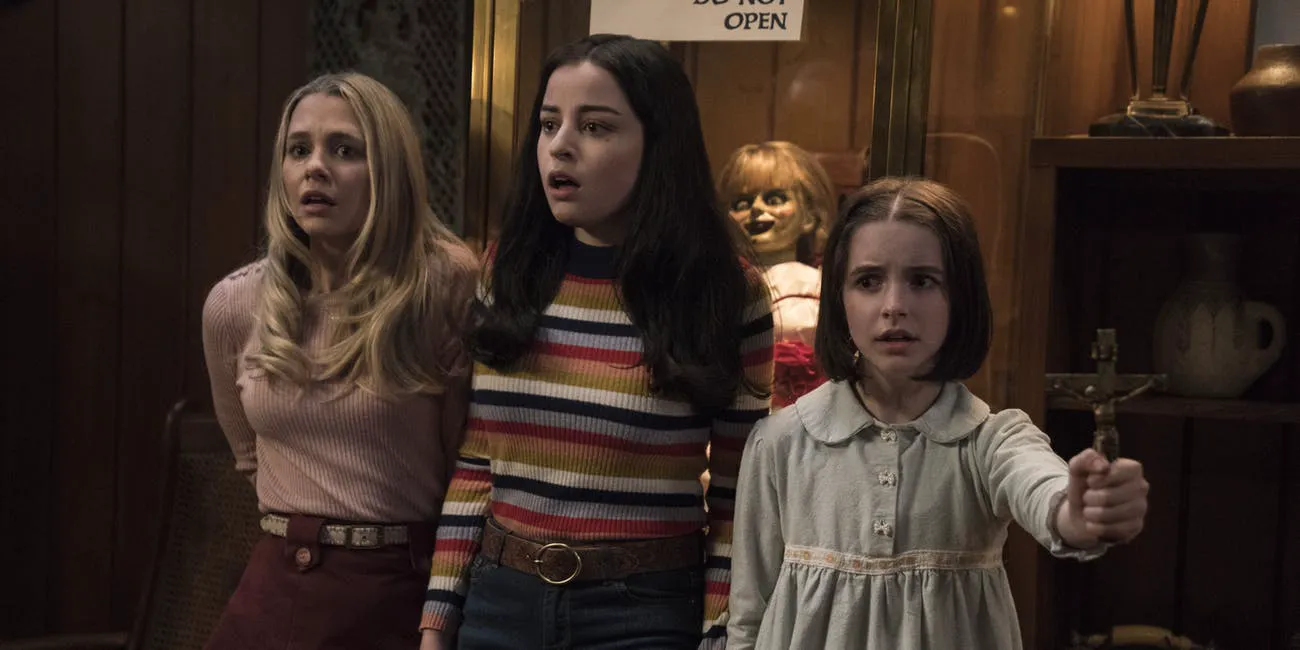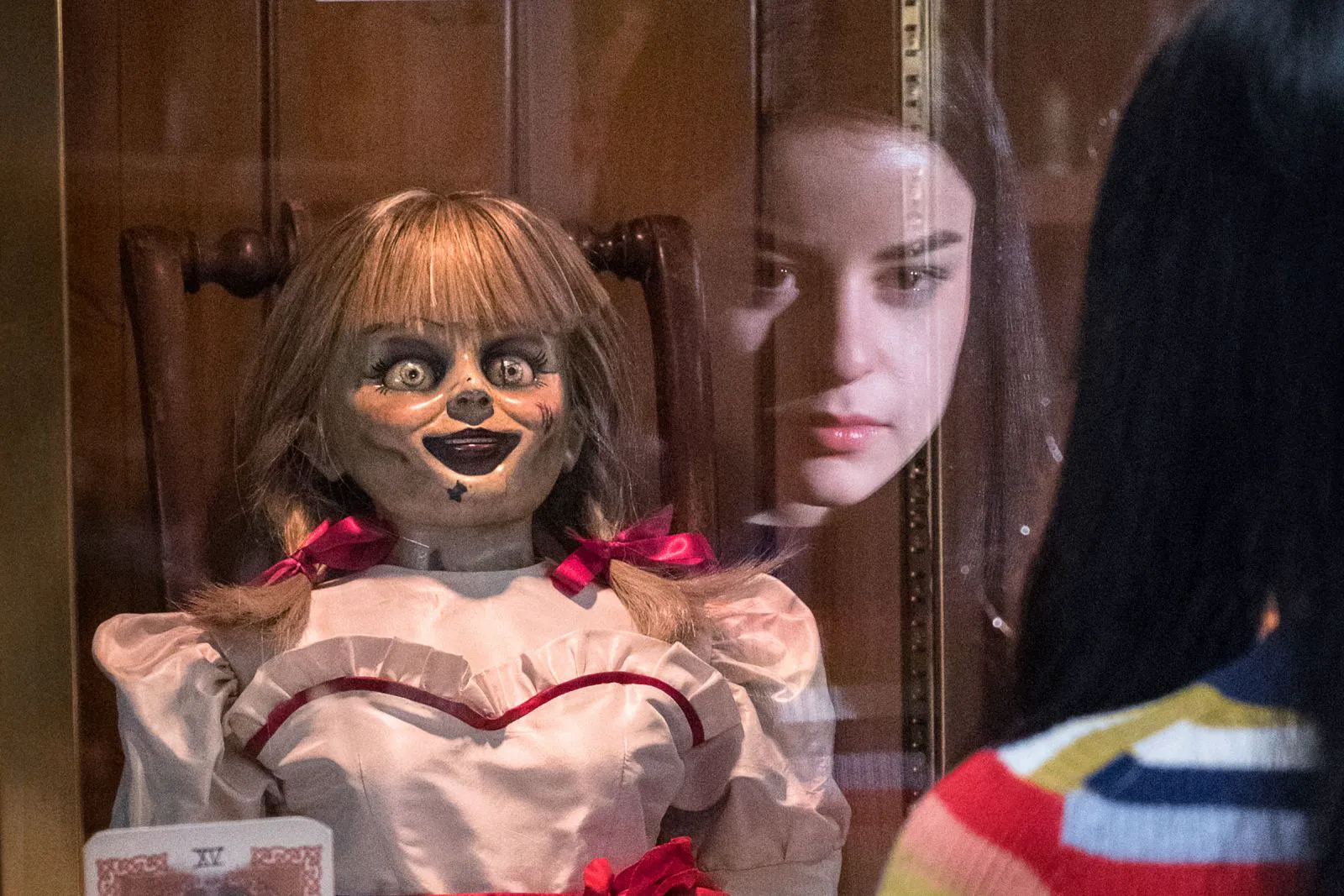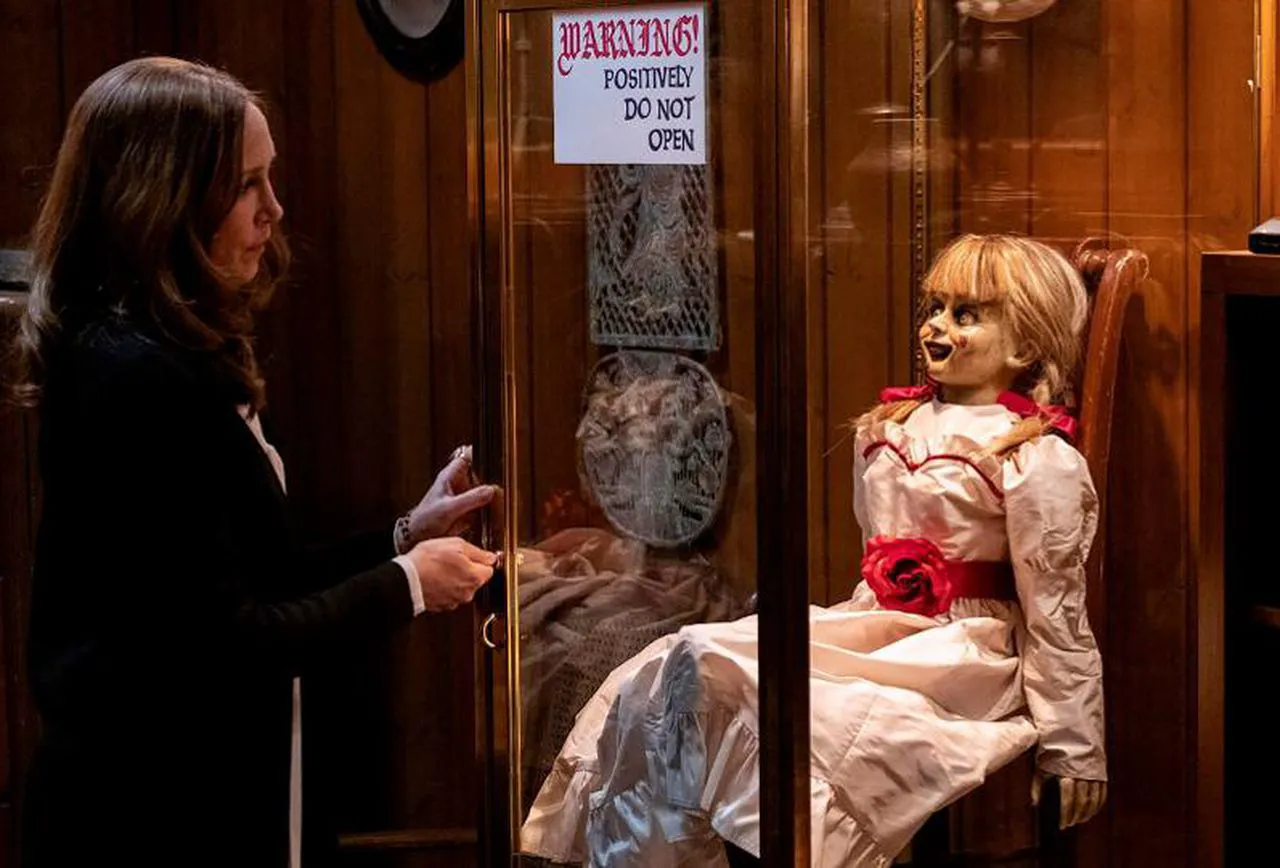A clumsily assembled midquel to “The Conjuring,” failing to frighten or amuse.
The year is 1968. Demonologists Ed and Lorraine Warren isolate the possessed doll Annabelle, which has been terrorizing a group of young babysitters, from the outside world and place the evil entity in a makeshift occult museum. A year later, the couple embarks on a one-day business trip, leaving their daughter Judy in the care of a nanny. The girl is aware of her parents’ work and knows how dangerous everything stored in their basement is, including the porcelain doll in the glass case. However, certain events lead to the doll’s escape, awakening other spirits in the “Warren Museum” and initiating a hunt for Judy and her friends.

The success of James Wan’s “The Conjuring” is well-deserved. A truly creative and stylistically consistent horror attraction, it stood out among the monotonous scares of those years (and the monopoly of the “Paranormal Activity” series). However, despite all the obvious merits of “The Conjuring,” many were most captivated by the Annabelle doll, which contributed to the expansion of the cinematic universe named after the Warrens. It’s not hard to guess that the film wasn’t groundbreaking and was only released to make money and warm up the audience before the premiere of the second “Conjuring.” But with the release of the official sequel to the Warrens’ story, the spin-off machine only intensified its rotation thanks to the appearance of even more memorable demons in the sequel (including the Crooked Man and the Nun). At the same time, Annabelle remained the mascot of “The Conjuring” franchise and even got a proper prequel directed by David F. Sandberg (“Annabelle: Creation”). Now it’s time for Annabelle to come home (“Annabelle Comes Home” is the original title of the film). And this is “The Conjuring 1.5.”

With such a derogatory definition as “intermediate part,” it’s hard to say that the third “Annabelle” is more useless than the first. In fact, it’s quite the opposite. This is the first spin-off of “The Conjuring” to feature the characters of Patrick Wilson and Vera Farmiga. Plus, it’s a direct continuation of that prologue with the doll, which ideally should have expanded the mini-story told in Wan’s film and, along with it, revealed the potential of the titular villain. In reality, the film fails to cope with these tasks. The first 10 minutes of “Annabelle” are made for fan service and to lead into a more detailed exploration of the contents of the “Warren Museum,” which will subsequently terrify viewers instead of Annabelle. Like comic book films that add more and more characters to sell toys, in “Annabelle,” spirits are activated only to launch a series of “original” spin-offs. About the Ferryman with his fetish for coins, about the American Werewolf in London, about the Samurai with his tragic story, etc. Sometimes the number of images per square millimeter of film is so high that the spooky-fest takes on the outlines of an Abbott and Costello crossover with classic Universal monsters. Although Annabelle most strongly evokes associations with “Goosebumps” or the Canadian “Are You Afraid of the Dark?”. Or rather, with their worst episodes, which try very hard to resemble the creations of Stephen King with his symbiosis of melodrama and horror, but end up with who knows what.

Wilson and Farmiga deliver a disjointed performance, too abruptly changing the tone of the narrative and jumping from serious conversations about the supernatural to exchanging mutual pleasantries. It seems the actors are quite tired of their roles and just want to get a check. This shortcoming is compensated for by Mckenna Grace, who plays Judy Warren. The actress is clearly interested in what is happening and practically carries the entire film on her shoulders. Another thing is that the material that the actors have to work with is extremely toothless, not to mention the characters, which add weight to the definition of “stereotypical.” Take, for example, the character of Katie Sarife, who, despite a clear motivation, turns into almost a collective image of those horror characters who, if given the opportunity, will open Pandora’s box just for fun. With such a creative concept as here (a sinister basement from which an entire pantheon of monsters emerges), the plot could have turned into something ironic, but the franchise is not distinguished by a light presentation, and the threequel has to correspond to the gloomy legacy. So here we have a family drama, one-sidedly discussing the themes of grief and early acquaintance with death.
Annabelle herself boldly joins the list of cinematic villains like Hannibal Lecter, Silva from “Skyfall,” Loki, and many others. She is such an evil genius who does not miss a single opportunity to spoil the lives of the heroes and periodically turns on the “Moriarty” mode, asking the question “Did you miss me?!”. We didn’t miss you. And after such a threequel, brazenly milking the franchise, leaving a start for millions of spin-offs and even a potential soft reboot of “The Conjuring,” we won’t miss you anytime soon. The memory of Lorraine Warren, of course, is not tarnished, but the franchise is in great danger. If they are already openly spitting on the chronology of events, adding to the film an artifact that should not be there (in 1969, a music box from 1971 magically appears), and demons are exorcised with shots from the first “Conjuring,” then it’s scary to imagine what the greed of the producers will lead this series to.